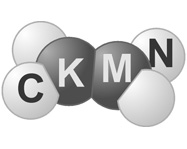| Spreker: |
Prof.dr. R.A. van Santen
|
| Datum: | 3 maart 2015 |
| Aanvang: | 20:00 uur |
| Locatie: | Kruytgebouw Universiteit Utrecht, zaal W728/729, Padualaan 8, Utrecht (Uithof) |
Samenvatting:
Katalytische processen worden grootschalig toegepast in de huidige chemische industrie. Ook de reacties die biologisch bestaan mogelijk maken zijn katalytisch van aard. In het eerste geval is er vooral sprake van heterogene anorganische systemen,
in het tweede geval zijn de eiwitten die als enzym functioneren.
In het eerste gedeelte van de voordracht zal een historische introductie worden gegeven van de belangrijkste technologische en wetenschappelijke ontwikkelingen die geleid hebben tot onze moderne inzichten van de werking van deze systemen.
Spectaculair zijn vooral de wetenschappelijke ontwikkelingen van de afgelopen twintig jaar, die ertoe hebben geleid dat de werking van katalysatoren op moleculair niveau kan worden gevolgd. Dit heeft er toe geleid dat verschillen en overeenkomsten van technische en biologische systemen kunnen worden bepaald. Deze inzichten hebben tot belangrijke nieuwe toepassingen geleid.
We zullen de moleculaire werking van het industriële proces bespreken waarbij aardgas wordt omgezet in diesel. Dit Fischer
-Tropsch proces wordt thans toegepast bij aardgasvelden in Qatar door Shell en Sasol, wat tot belangrijke reductie van broeikas emissies kan leiden. Op moleculair niveau is sprake van zelfassemblage van de koolwaterstoffen en zelforganisatie van het katalysator oppervlak, dat zichzelf optimaliseert tijdens de reactie. Genoemde moleculaire processen geven aan hoe complex de verschijnselen zijn die katalyse mogelijk maken.
Soortgelijke complexe processen zijn ook de basis van levende cellulaire systemen, wat een relatie tussen de mens gemaakte en biologische katalyse geeft.
Soortgelijke reacties in water kunnen leiden tot synthese van vetzuur gerelateerde moleculen, die membraan vorming mogelijk maken. Processen analoog aan Fischer-Tropsch reactie hebben, mogelijk in de diepzee waar CO2 onder hoge druk in contact komt met gereduceerd IJzer sulfide, geleid tot synthese van het hiertoe nodige synthese gas bestaande uit CO en H2.
In het slot van de voordracht zullen we aangeven hoe op deze wijze gevormde membranen kunnen leiden tot liposomen. Deze kunnen tot deling worden gebracht, wat een kenmerk is van een levend systeem. Deze observaties leiden tot inspiratie voor veel huidig biomimetisch katalytisch onderzoek aan kunstmatige celsystemen.
Curriculum vitae Prof.dr. R.A. van Santen
Rutger Anthony van Santen was born in 1945 in Langedijk, The Netherlands. After finishing the gymnasium at Middelburg, he studied chemistry at the University of Leiden. For 1966 he received a bachelors degree in biochemistry and in 1967 his masters degree in theoretical organic chemistry (cum laude). He received his Ph.D. in 1971 on a thesis titled "On the theory of resonant scattering" with promoter Prof. Dr. L.J. Oosterhoff. (cum laude)
From 1971-1972 he continued research as a postdoc at SRI, Menlo, California in the Molecular Physics department headed by Dr. F.T. Smith.
In 1972 he joined Shell Research at Amsterdam. In the period 1972-1988 he had several different functions at Shell Research. His main interest was catalysis and his last function was head of the section Physical Chemistry and Catalysis. In 1976 he was a visiting Professor in Theoretical Chemistry at the Free University Amsterdam. From 1982-1984 he was assigned to Shell Development Co. in Houston, Texas.
In 1986 he became Professor Extraordinarius in Surface Chemistry at Eindhoven, University of Technology. In 1988 the appointment to full Professor of Catalysis followed.
In the period 1992-2000 he was scientific director of the Netherlands Institute of Research in Catalysis.
He was the first and founding director of this institute.
In 1981 he received the golden medal for excellence in research of the Royal Dutch Chemical Society.
In 1991 he was awarded the Chiapetta Lectureship by the North American Catalysis Society.
He was scientific director of NIOK (Netherlands Institute of Research in Catalysis) from 1992 until 1999.
The Royal Society of Chemistry, Great Britain, invited him as Bourke lecturer in 1996.
In 1997 he received the Spinoza Award from the Dutch Foundation for Pure and Applied Research.
In 1998 he became an Honorary Doctor at the National Ukrainian Technical University (Poly Technical Institute), Kiev, Ukraine.
In 1999 he was the Gwathmey Distinguished Lecturer of the University of Virginia, U.S.A.
In 2000 he was awarded the Karl-Ziegler -Lectureship at the Max-Planck-Institut für Kohlenforschung in Mülheim, Germany.
From 2001 until 2005 he was Rector-Magnificus of the Eindhoven University of Technology.
In 2001 he received the Alwin Mittasch Medal Dechema, Germany and he became a member of the Royal Dutch Academy of Sciences and Arts.
In 2002 he was chairman of the Royal Netherlans Chemical Society.
In 2004 he was awarded the Miller Visiting Professorship, Berkeley University, California and received the Academy Professor Award of the Royal Netherlands Academy of Arts and Sciences. In 2005 he returned as scientific director of the National Research School Combination Catalysis Controlled by Chemical Design (NRSC-C), that he also had directed form 1991 until 2001. In 2008 he was elected foreign associate of the United States National Academy of Engineering (NAE). In 2009 he became Fellow of the Royal Society of Chemistry. He received the Holst Award, 2009 by TU/e and Philips Research.
In 2010 he was elected Francois Gault lecturer of the EFCATS, The European Federation of Catalysis Societies.
In 2011 he was invited to be visiting fellow of Institute of Advanced Studies of the Technical University Munchen.
He has published over 700 papers, 17 books and 22 patents.
His present research interests are molecular aspects of heterogeneous catalysis.
The two main themes of his research are:
computational studies of surface-chemical reactivity and mechanism in heterogeneous catalysis.

